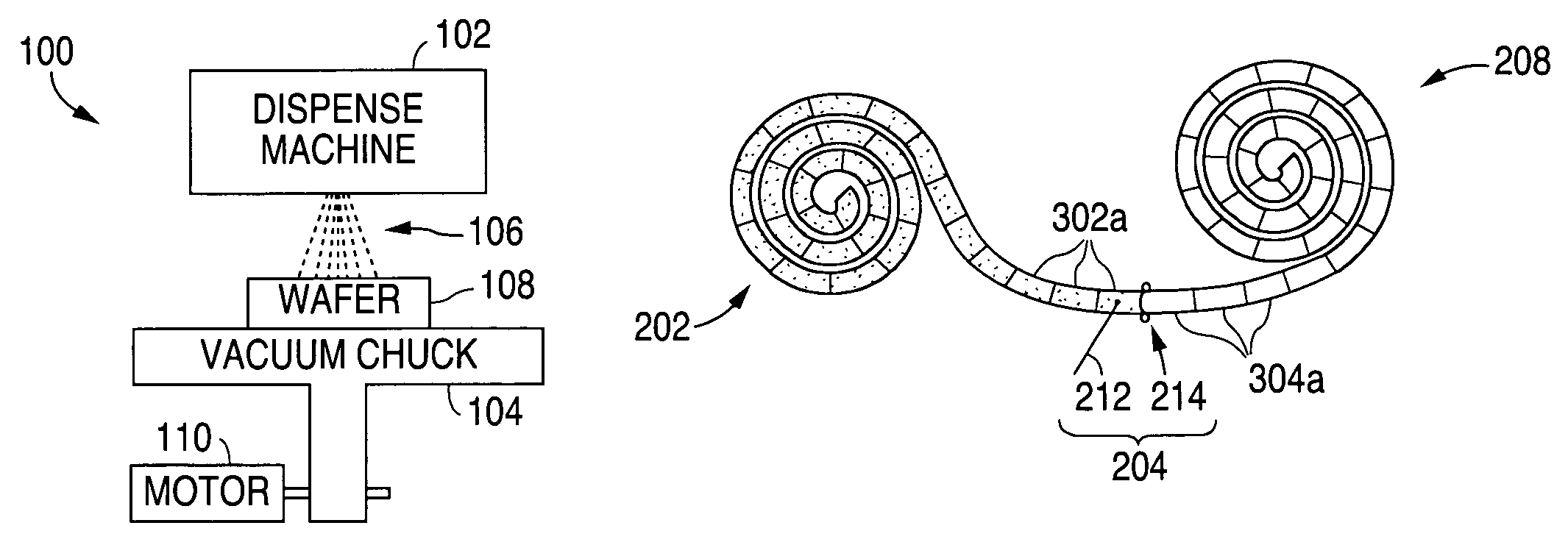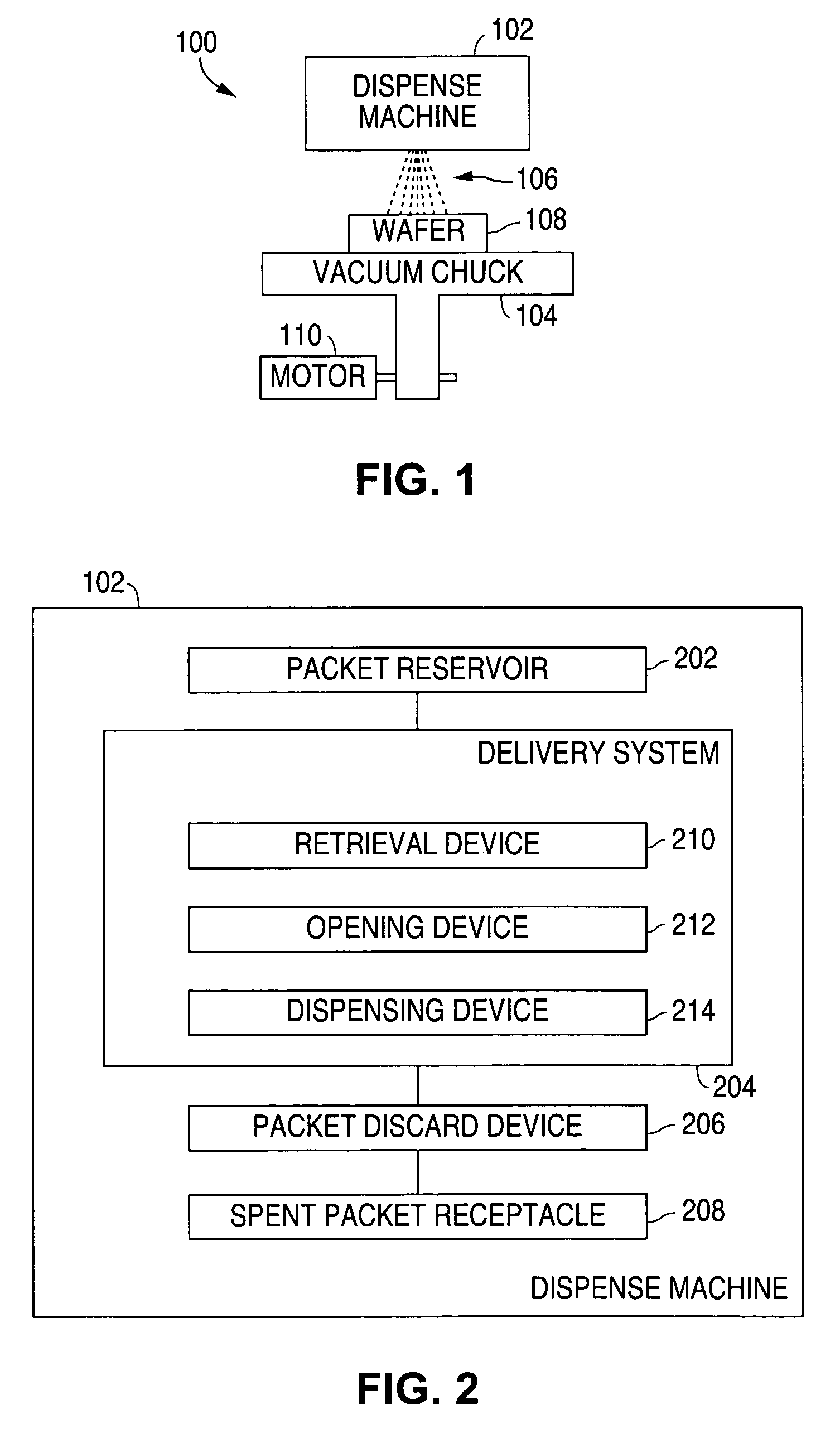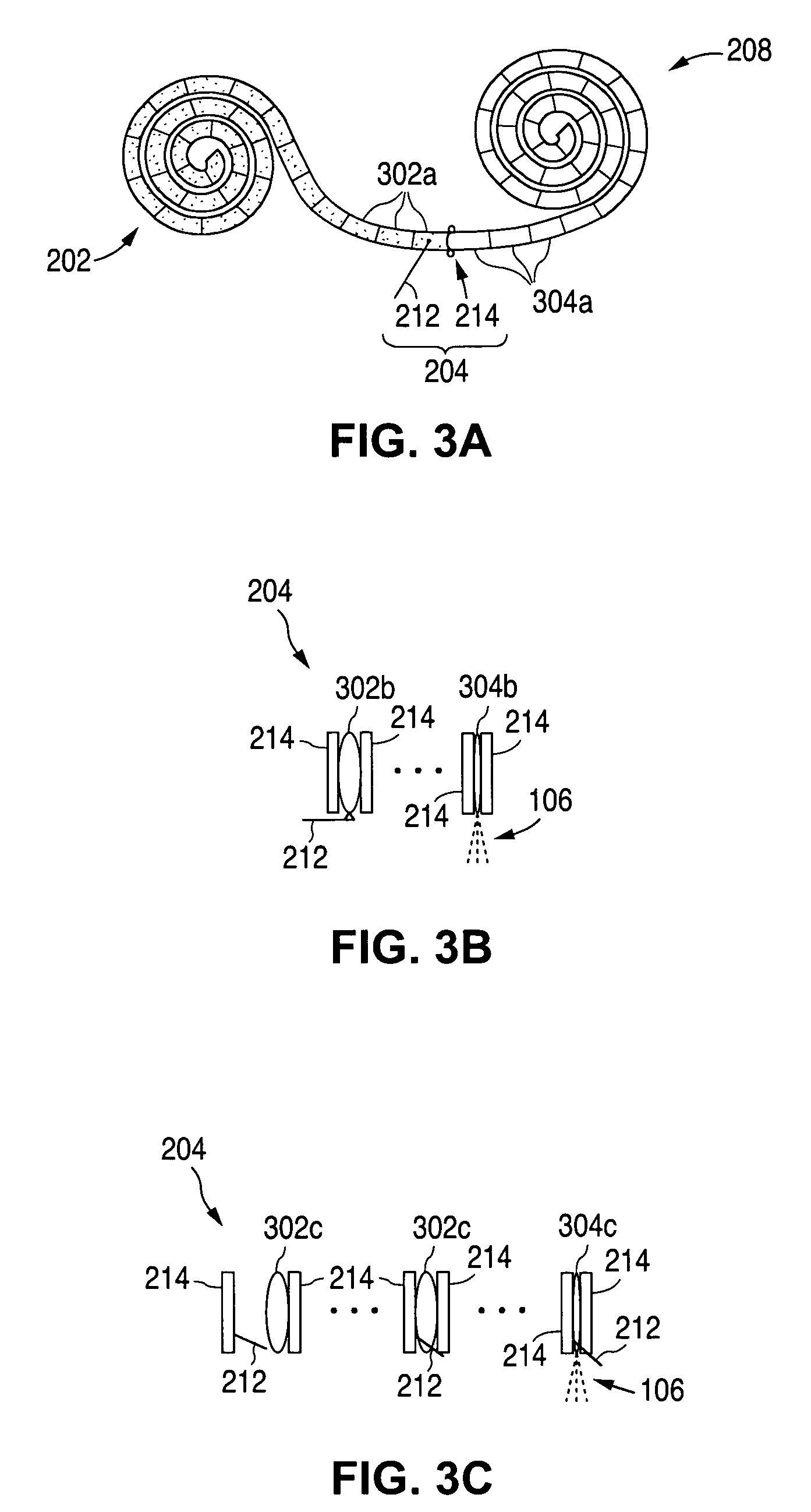System and method for dispensing material onto a semiconductor wafer
- Summary
- Abstract
- Description
- Claims
- Application Information
AI Technical Summary
Problems solved by technology
Method used
Image
Examples
Embodiment Construction
[0015]FIGS. 1 through 4, discussed below, and the various embodiments used to describe the principles of the present invention in this patent document are by way of illustration only and should not be construed in any way to limit the scope of the invention. Those skilled in the art will understand that the principles of the present invention may be implemented in any suitably arranged semiconductor fabrication system.
[0016]FIG. 1 is a block diagram illustrating a system 100 for dispensing material onto a semiconductor wafer in accordance with one embodiment of the present invention. The system 100 comprises a dispense machine 102 and a vacuum chuck 104. The dispense machine 102 is operable to dispense material 106 onto a semiconductor wafer 108. The vacuum chuck 104 is operable to hold the wafer 108 in the appropriate position while the material 106 is dispensed onto the wafer 108 by the dispense machine 102. The vacuum chuck 104 comprises a motor 110 that is operable to spin the v...
PUM
 Login to View More
Login to View More Abstract
Description
Claims
Application Information
 Login to View More
Login to View More - R&D Engineer
- R&D Manager
- IP Professional
- Industry Leading Data Capabilities
- Powerful AI technology
- Patent DNA Extraction
Browse by: Latest US Patents, China's latest patents, Technical Efficacy Thesaurus, Application Domain, Technology Topic, Popular Technical Reports.
© 2024 PatSnap. All rights reserved.Legal|Privacy policy|Modern Slavery Act Transparency Statement|Sitemap|About US| Contact US: help@patsnap.com










